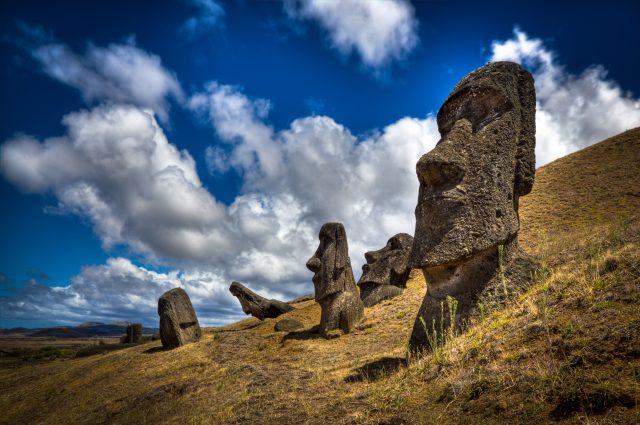This website uses cookies so that we can provide you with the best user experience possible. Cookie information is stored in your browser and performs functions such as recognising you when you return to our website and helping our team to understand which sections of the website you find most interesting and useful.
Easter Island named new Chilean DO
Easter Island and Patagonia’s Chiloé Archipelago have received Denominación de Origen (DO) designations as part of a major reform of Chilean wine.

Introduced in 1994, Decree 464 has been the subject of three rounds of amends to add new wine regions and grape varieties to the labels of Chilean wine – with the most recent reforms being introduced in July 2024.
“The wine industry is the most important in the country from the point of view of Chile’s projection,” explained Esteban Valenzuela, Chile’s Minister of Agriculture, when announcing the news late last month.
“Chilean wine is our great cultural ambassador of the delights and diversity of our country and this is a very important day, because, on the one hand, we have an upturn in wine sales abroad and at the same time, we are together with the SAG [Servicio Agrícola y Ganadero], creating, on the one hand, new wine production areas and also new strains. The industry is innovating and improving more and more.”
DO Rapa Nui
Among the new DOs is Rapa Nui, more commonly known as Easter Island.
Sitting more than 3,500 kilometres west of the Chile’s Pacific coast, Easter Island has been Chilean territory since 1888.
Though its subtropical climate does not make it an obvious contender a a wine region, viticulture has been practiced there since the 19th century, with recent genetic research uncovering that six grape varieties, including País and Moscatel de Alejandría as well as an unknown one, are grown on the island.
However, as the granting of DO status attests to, recent years have seen renewed interest in Rapa Nui, with winemakers Alvaro Arriagada and Fernando Almeda planting new vines, including Pinot Noir and Chardonnay, on the remote island.
DO Chiloé
The other DO that has been added is the Chiloé Archipelago – reachable from Santiago by a 14 hour drive (with ferry crossing) southwards.
The archipelago, consisting of the large island of Chiloé and a series of smaller islands, is not the most obvious wine region – in the winter it is consumed by thick fog in the mornings and evenings, and its landscape and climate is more reminiscent of Scotland than that of Chile’s more Mediterranean Central Valley.
However, there are producers pushing the boat out (quite literally) here. Among them is Montes, which has a two hectare vineyard planted on the remote island of Añihué at a latitude of 42° South.
While Aurelio Montes describes the vineyard as a “university thesis more than a business” due to the viticultural research taking place there, DO status being granted to the Chiloé Archipelago suggests that the region could become more commercially significant in the near future – perhaps, due to its cooler climate, for sparkling wines in particular.
View this post on Instagram
A key factor that has made viticulture in Chiloé possible has been climate change, though the cool Humboldt current that flows northwards up Chile’s coast means that the west of Chiloé, closer to the current, is perhaps still too cold for viticulture.
More about Montes’ project can be read in the upcoming Chile feature in the September 2024 issue of the drinks business.
Both Chiloé and Rapa Nui are also popular tourist destinations, so formally establishing them as wine regions may yet further drive visitors to these islands too.
Newly-approved grapes
The changes to Decree 464 also means the addition of 41 grape varieties to be varietally-labelled on wine bottles – prior to this, just 47 grape varieties made the cut, meaning that the number has almost doubled.
Among the grapes that can now feature on labels are red Italian varieties such as Montepulciano, Sagrantino, Corvina and Aglianico, as well as the likes of Marselan and Gamay. White grapes added include Garganega, Falanghina, Petit Manseng and Sylvaner.
This isn’t the only major change to drinks labelling in Chile to come in recently – new regulations mean that the labels of bottles destined for the domestic market have to include health warnings about the dangers of excessive alcohol consumption.
Related news
Land of Plenty: a look at Félix Solís Avantis in Chile

